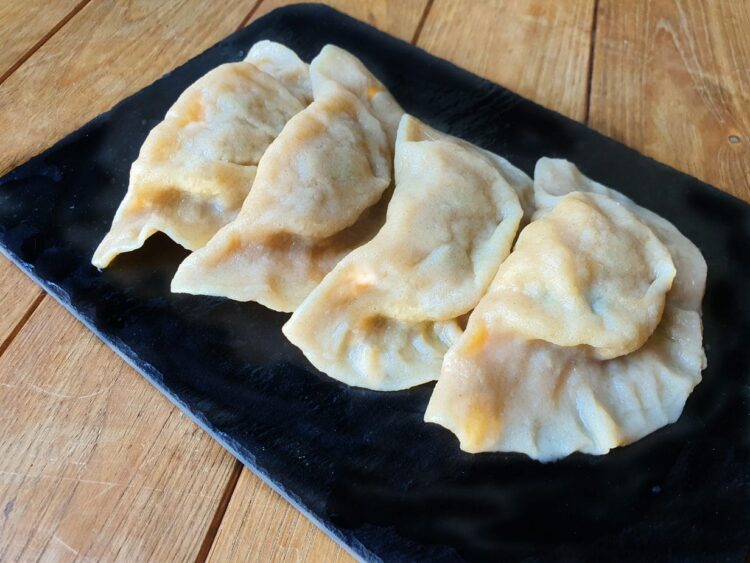A delicious recipe for jiaozi—Chinese pork and cabbage dumplings
A staple of Chinese cuisine, jiaozi are stuffed dumplings loved across Asia. Sweet or savory, these little parcels are incredibly versatile—that’s part of their appeal!
What are jiaozi?
Simply put, jiaozi are the Chinese counterpart to Western ravioli: minced meat and vegetables wrapped tightly in a crescent-shaped piece of dough and sealed along the edges.
If the name doesn’t ring a bell, you might know them as “Peking ravioli.” In Chinese tradition, they’re served at breakfast at the dawn of the New Year. And they’re not just another dish…
They carry real symbolic weight: they represent wealth and family unity—akin, in parts of Europe, to the tradition of New Year’s sauerkraut. All the more reason to explore another culinary tradition!
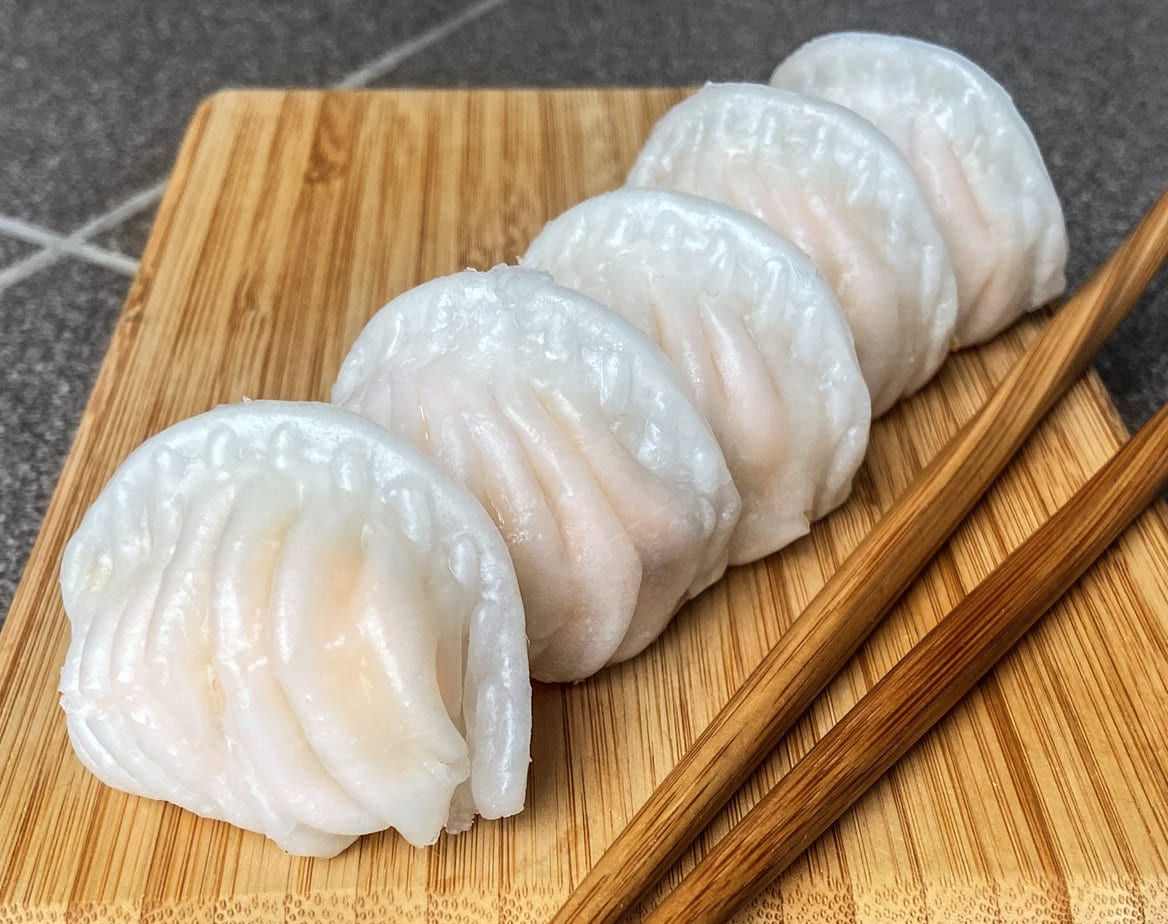
Origins and history of jiaozi
You could almost call them the Asian ancestor of Italian ravioli. Jiaozi appeared about 1,800 years ago, and “huntun” is believed to have been the first type to reach the emperor’s court in the 3rd century AD.
Most people therefore didn’t eat many at the time; they were mainly reserved for the high nobility.
Only in the 17th century, during the Ming and Qing dynasties, did jiaozi become widespread. They were even associated with year-end folk rituals meant to ensure fortune and prosperity.
Over time, jiaozi made their way into traditional cuisine, and cooks around the world have adopted the recipe. They even have their own names in Japanese cuisine (gyoza), Korean cuisine (mandu), and American cuisine (dumplings).
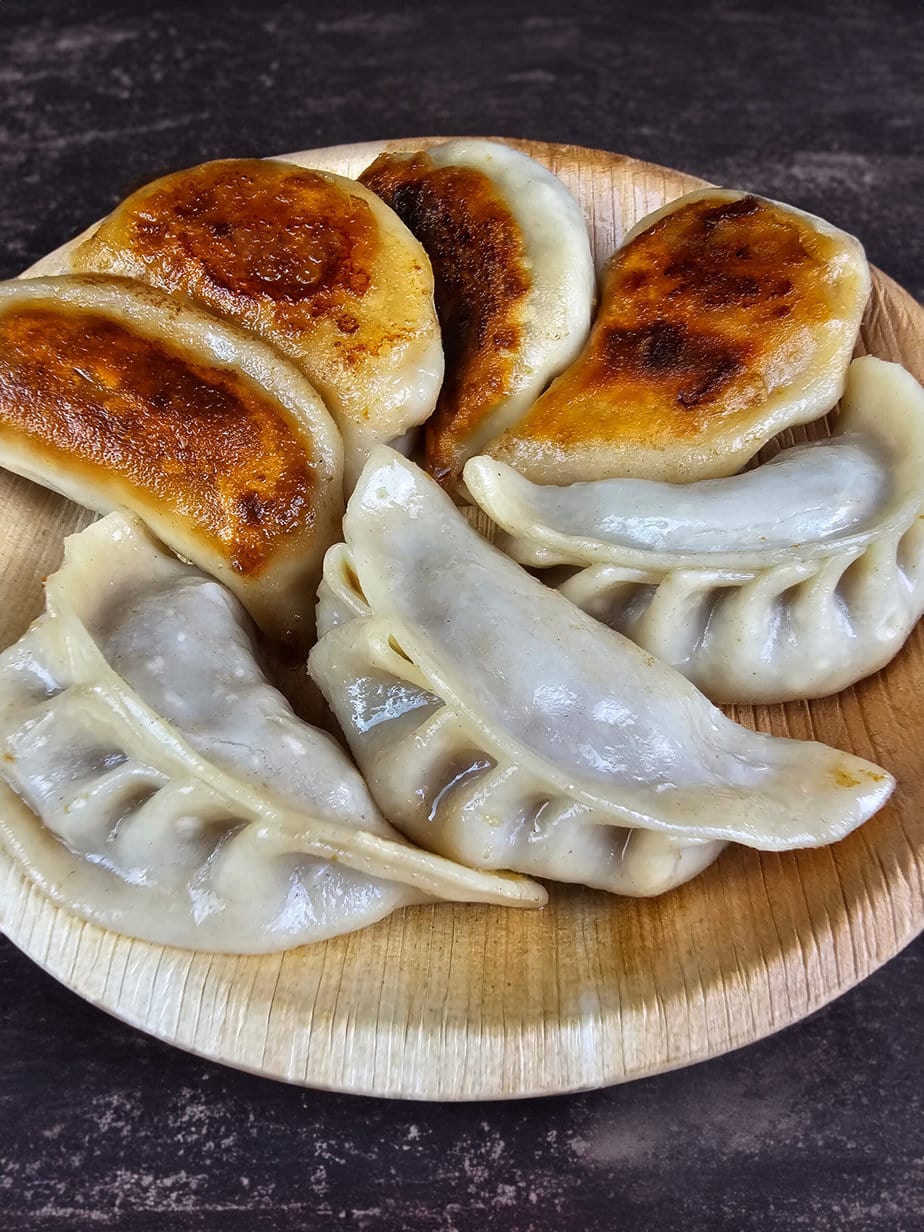
How to cook jiaozi
Jiaozi are wonderfully versatile—serve them as a small sweet bite or a savory appetizer. While the method differs from Italian ravioli, the dough uses just two ingredients: wheat (or rice) flour and water.
They’re easy to make at home. Simply mix and knead until you have a smooth dough. It should be neither too dry nor too wet. Water temperature plays a big role in the dough’s texture.
The hotter the water, the thinner and more translucent your dough will be. In that case, favor gentle cooking methods such as steaming or poaching.
Conversely, if you work with cold water (as in the traditional recipe), your jiaozi dough will be thicker, sturdier, and more elastic. Then you can cook them any way you like—boiled, steamed, or fried.
As for the filling, Beijing-style jiaozi are generally stuffed with pork, scallions, and cabbage. At serving time, they’re paired with soy sauce and sesame oil. Of course, feel free to customize your jiaozi—there are hundreds of ways to prepare them.
Jiaozi vs. wonton: what’s the difference?
These days, the difference can be subtle, as dumplings have been reinterpreted around the world. Traditionally, jiaozi are distinguished from wontons mainly by their shape and cooking method.
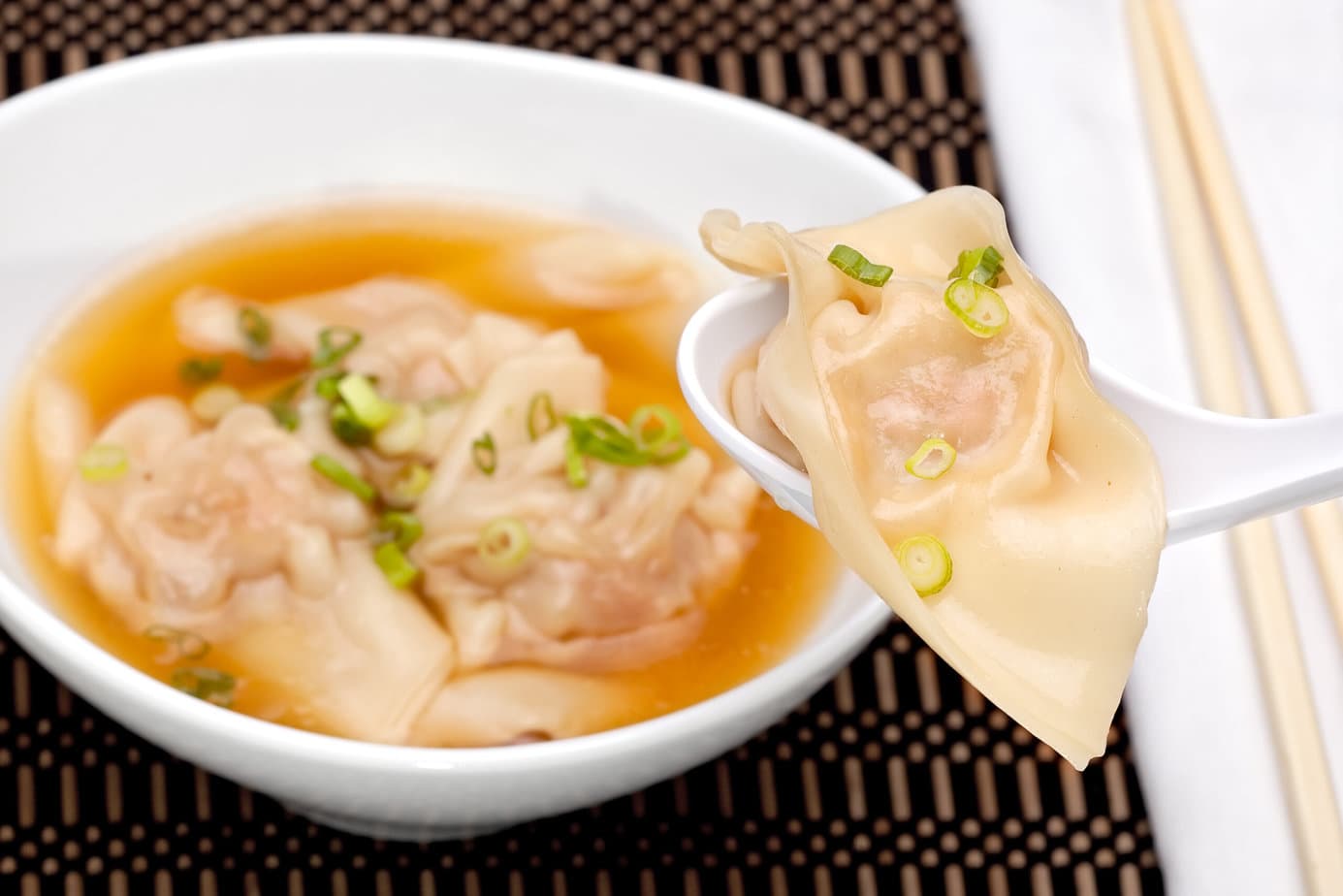
Wontons are oval, whereas jiaozi are crescent-shaped. Also, classic Beijing jiaozi have a specific filling based on pork and thinly sliced vegetables.
Wontons, on the other hand, can include various meats and seafood. With so many versions today, the line between styles is quite thin.
Basic ratios for creating your own jiaozi fillings
Total weight of the filling
- 9/10 meat and fat
- 1/10 other additions (vegetables)
This is far from absolute, but use it as a starting point and adjust to taste.
Meat distribution
- 2/3 lean meat
- 1/3 fat
To make things easier, your ground meat should be 30% fat.
Total fat distribution
However, if you want ultimate precision and add everything separately (for example, using 0% fat lean pork but compensating with duck fat), here are the ideal fat ratios:
- 2/3 animal fat
- 1/3 a blend of seasoned oils
Example (rounded): 100g lean pork, 43g duck fat, 21g seasoned oil.
If we follow the total ratios mentioned earlier, you need to add about 18g of the vegetables of your choice. Be careful if you opt for cabbage or other vegetables that release a lot of water; it’s better to draw out the water beforehand by salting.
Preparing the seasoned oil blend:
- The blend can contain whatever you like.
- Example: leek, star anise, and fennel fried in peanut oil.
Seasoning the lean meat:
- The seasoning varies according to taste; only salt is mandatory. Classic options include five-spice, light soy sauce, Shaoxing wine, …
Adding seasoned water:
- Add it gradually, one tablespoon at a time; the amount should be more or less equal to the amount of seasoned oil added.
Finishing:
- Once the filling is sticky enough to leave streaks on the side of the bowl, fold in the vegetables and the seasoned oil.
NB: If you opt for separate animal fat, add it at the finishing step.
Where to find jiaozi wrappers?
If you don’t make your jiaozi dough yourself, you can easily find dumpling wrappers in Asian grocery stores. Often, you’ll find them in the frozen aisle. They’re also easy to find online.
You can also use my gyoza dough recipe
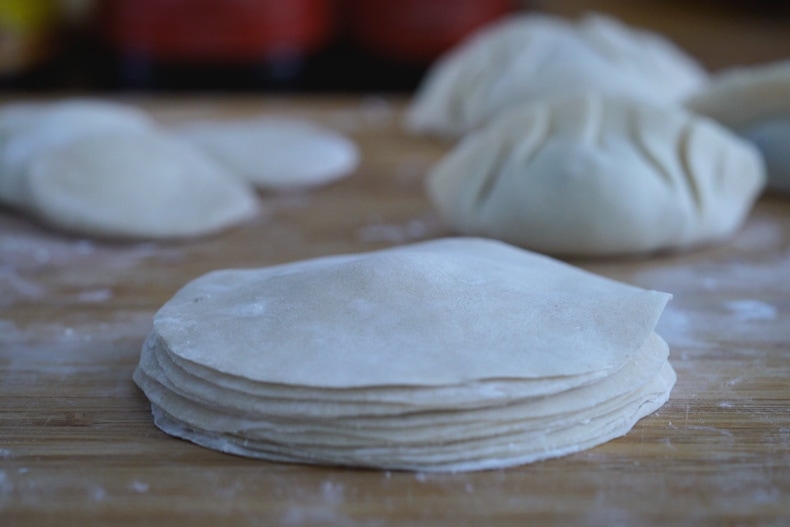
How to store jiaozi?
Store your dumplings in an airtight container in the refrigerator. However, I recommend enjoying them as soon as possible. If they’re raw, you can freeze them, but this may alter their shape and flavor.
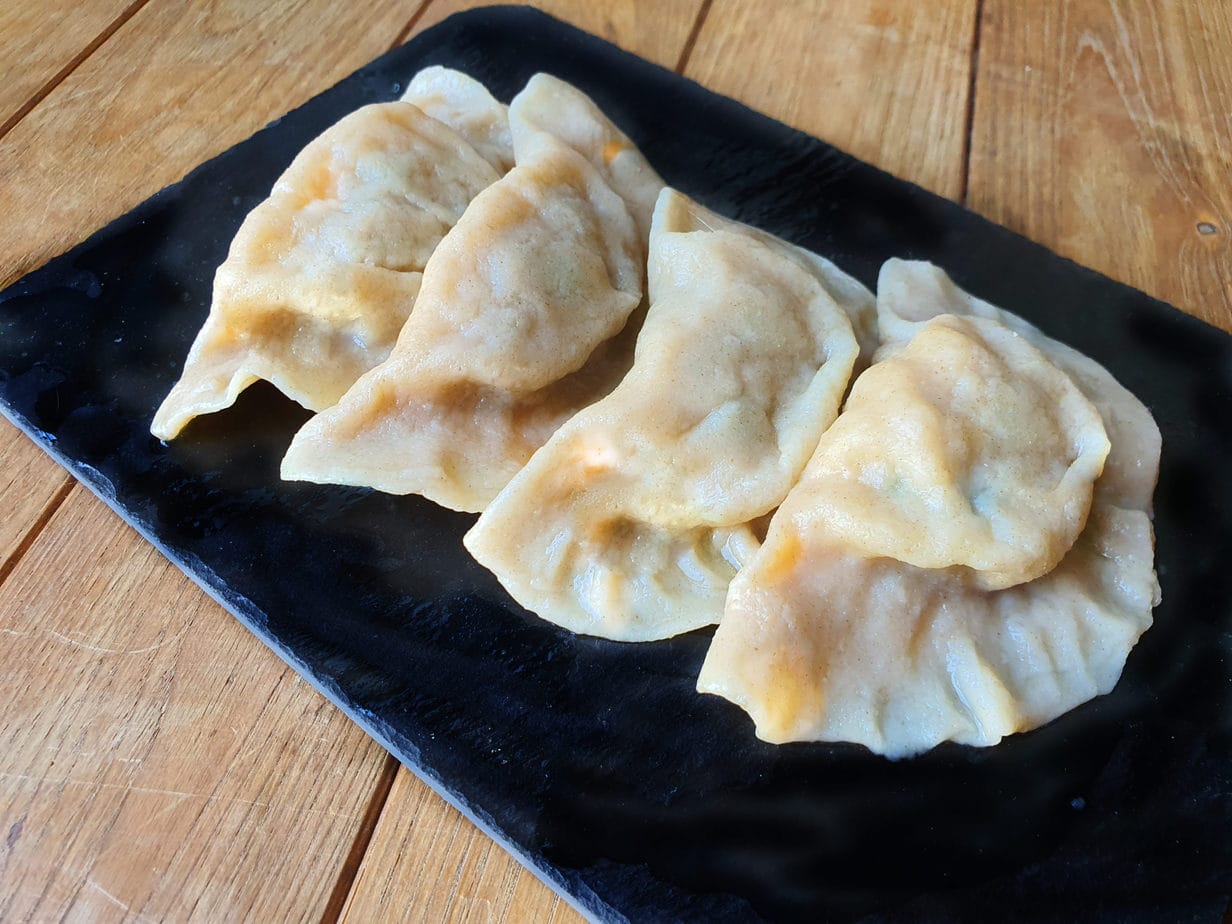
Ingredients
Seasoned Oil
- 350 ml peanut oil
- 100 g spring onions
- 50 g celery preferably Chinese celery
- 0.25 onion
- 4 cloves garlic
- 1 piece of ginger about 3 cm
- 0.5 cinnamon stick Chinese
- 2 star anise
- 0.25 teaspoon fennel seeds
Infused Water
- 0.5 tablespoon Sichuan peppercorns
- 1 piece crushed ginger about 3 cm
- 160 ml water
Cabbage
- 300 g Chinese cabbage
- 1 teaspoon salt
Filling
- 300 g ground pork preferably belly, at least 30% fat
- Infused water, prepared in advance
Pork Seasonings
- 1 teaspoon salt
- 1 teaspoon Chinese five-spice
- 1 teaspoon chicken bouillon powder
- 1 teaspoon cornstarch
- 1 teaspoon light soy sauce
- 1 teaspoon Shaoxing wine
Finishing Oil
- 2 tablespoons seasoned oil
- 1 teaspoon toasted sesame oil
Dough
- 252 g wheat flour at least 10% protein
- 141 ml water
- 1.2 g salt
Instructions
Dough
- Mix the salt and flour.252 g wheat flour, 1.2 g salt
- Using a fork, add the water little by little. Knead for 3-4 minutes.141 ml water
- Cover and let rest for 10 minutes.
- The dough should now be much smoother. Knead for 1 minute.
- Cover while you prepare the filling.
Seasoned Oil
- Soak the spices in water for about 10 minutes before cooking to prevent them from burning.0.5 cinnamon stick, 2 star anise, 0.25 teaspoon fennel seeds
- Roughly chop the remaining ingredients.100 g spring onions, 50 g celery, 0.25 onion, 4 cloves garlic, 1 piece of ginger
- Gently fry the chopped aromatics and soaked spices in the oil over medium heat. This will take about 20 minutes. The onion should just begin to brown; stop before it turns golden.350 ml peanut oil
- Pour everything into a bowl while still hot, then cover. Let infuse for 1 hour, or preferably overnight.
- The next day, strain to remove the spices and aromatics.
Infused Water
- Bring the water to a boil.160 ml water
- Pour it into a bowl with the ginger and Sichuan peppercorns.1 piece crushed ginger, 0.5 tablespoon Sichuan peppercorns
- Infuse for about 30 minutes. Strain and let cool.
Cabbage
- Finely chop the Chinese cabbage.300 g Chinese cabbage
- In a mixing bowl, toss with the salt and let rest for 10-15 minutes.1 teaspoon salt
- Squeeze out the liquid, then transfer to cheesecloth and squeeze again to remove more. Set aside.
Filling
- Mix the seasonings with the pork. Always stir in the same direction.1 teaspoon salt, 1 teaspoon Chinese five-spice, 1 teaspoon chicken bouillon powder, 1 teaspoon cornstarch, 1 teaspoon light soy sauce, 1 teaspoon Shaoxing wine, 300 g ground pork
- Gradually pour in the infused water while stirring constantly in the same direction. The water addition should take about 3-5 minutes. The pork should become slightly sticky.Infused water, prepared in advance
- Just before forming the dumplings, combine the cabbage with the pork mixture.
- Add the finishing oil.2 tablespoons seasoned oil, 1 teaspoon toasted sesame oil
Cooking
- Flatten the dough by hand into a thick disc, then cut into 4 pieces.
- Roll each piece to about 2 cm thick.
- Cut into 2 cm-long pieces (or 10-12 g).
- Dust the pieces you aren't using right away with flour and keep covered.
- Flatten to form discs, then roll out with a rolling pin.
- Fold the dumplings much like classic ravioli; there aren’t really pleats as with gyoza. Seal well so they’re sturdy.
- To cook, add the dumplings to boiling water, then cover.
- As soon as the water returns to a boil, add about 150 ml of cold water.
- Let the dumplings return to a boil.
- Repeat once more, adding cold water and letting it return to a boil, then remove from the heat and drain.
- You can also steam them for 15 minutes.
Notes
Nutrition
Culinary sources
For this revised recipe, I relied on the excellent English-language YouTube channel “Chinese Cooking Demystified”.
